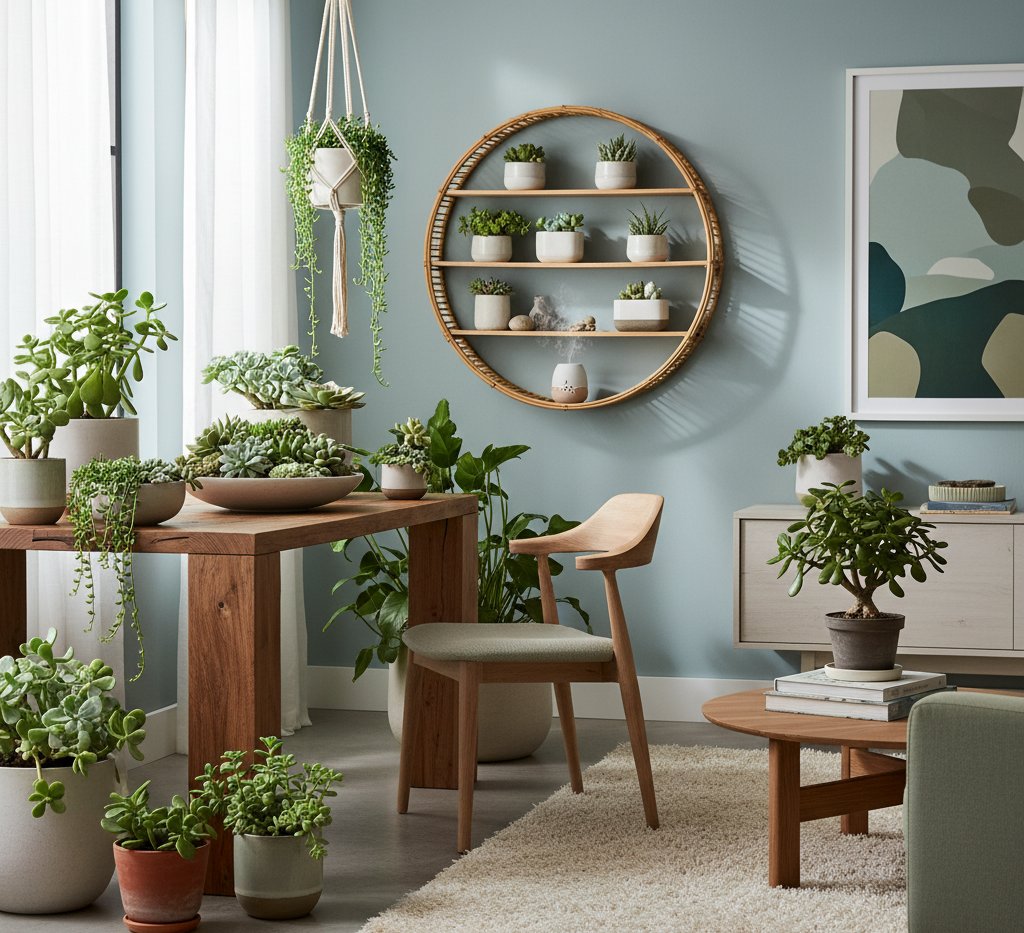Succulent Wellness-Focused Design
Surrounding yourself with nature can change how you feel and function every day. Succulent wellness-focused design blends beauty, calm, and sustainability into your space. It helps you create an environment that supports relaxation, focus, and emotional balance through simple, low-maintenance plants and thoughtful design choices.
You can use the natural shapes, colors, and textures of succulents to build a peaceful atmosphere that reduces stress and boosts mood. Their ability to thrive in minimal conditions makes them ideal for modern living, where time and space are limited but the need for calm is high. By combining succulents with natural materials and soft lighting, you can turn any room into a soothing retreat.
Key Takeaways
- Succulent wellness design connects natural beauty with emotional balance.
- Thoughtful placement and materials create calm, sustainable spaces.
- Simple design choices with succulents promote lasting well-being.
Principles Of Succulent Wellness Focused Design
Succulent wellness-focused design connects natural elements with spaces that support calm, balance, and physical comfort. It uses plant structure, texture, and placement to create an environment that encourages rejuvenation and steady well-being.
Defining Wellness-Focused Design
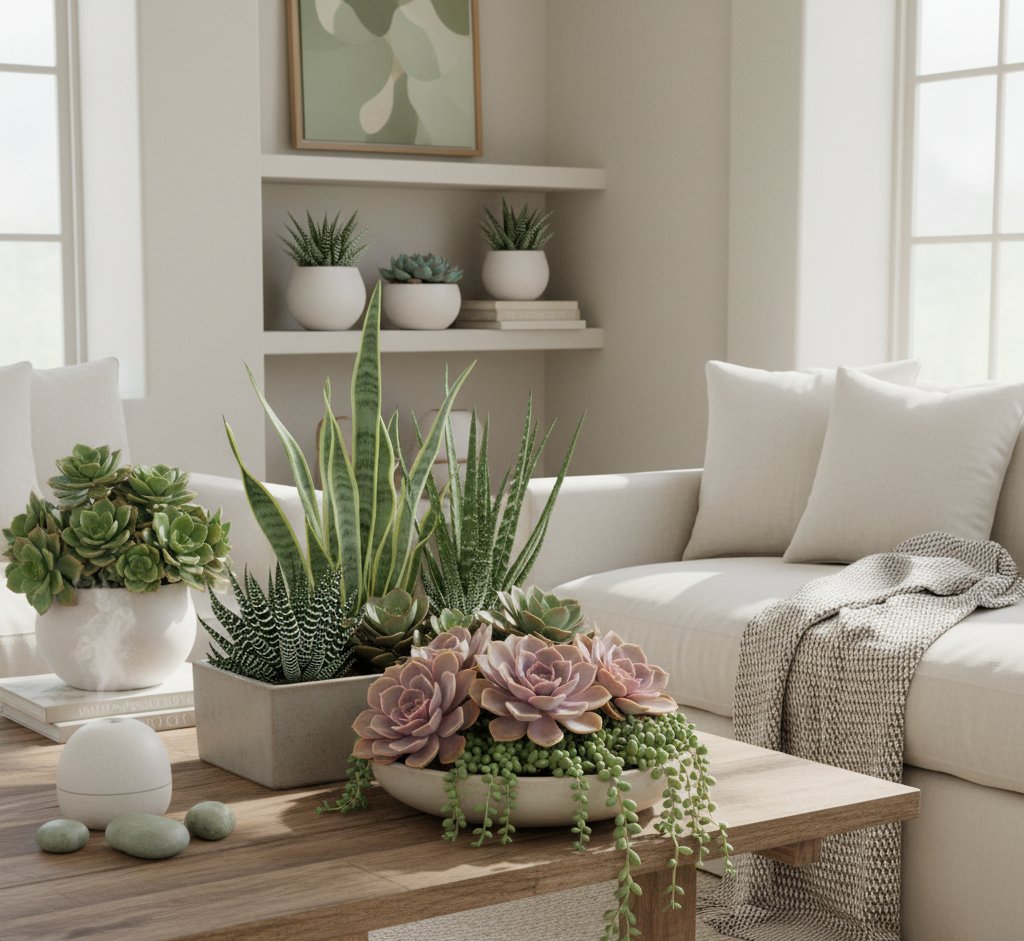
Wellness-focused design centers on how your surroundings influence your body and mind. It aims to reduce stress, support focus, and create a sense of ease. When you design with succulents, you use color, form, and arrangement to shape a restorative atmosphere.
You can apply simple design elements to achieve this:
| Element | Purpose | Example |
|---|---|---|
| Color | Promotes calm or energy | Soft greens and muted tones |
| Texture | Adds sensory interest | Smooth leaves or fine spines |
| Balance | Encourages harmony | Symmetrical groupings |
Succulents fit well into wellness-focused spaces because they require little maintenance and bring a sense of order. Their geometric patterns and natural symmetry contribute to visual stability. By placing them in areas where you spend time resting or reflecting, you reinforce a subtle connection between your environment and your well-being.
The Role Of Biophilic Design
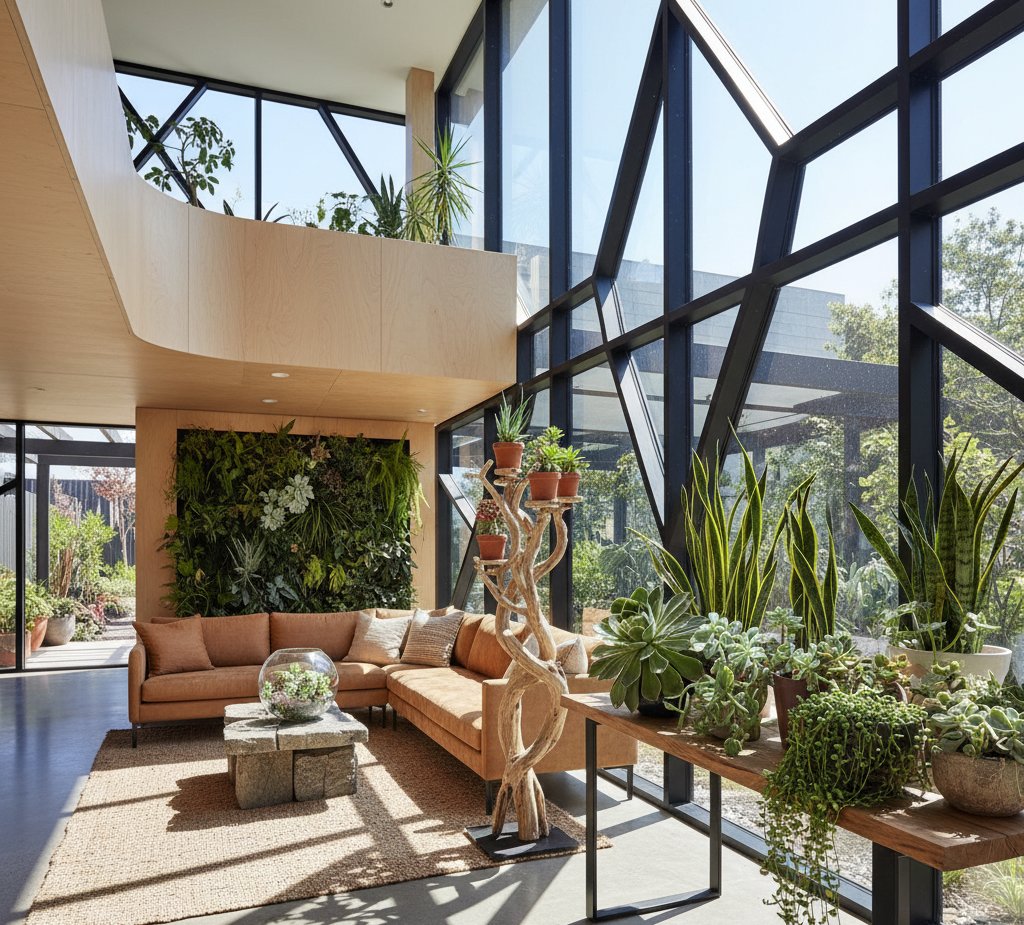
Biophilic design emphasizes your natural connection to living systems. It integrates plants, light, and natural materials to improve comfort and mood. Succulents support this approach through their sculptural shapes and resilience, which bring a grounded, organic feel to indoor or outdoor environments.
When you include succulents in your design, you introduce forms that mimic natural patterns such as spirals and fractals. These shapes are known to reduce mental fatigue and promote calm focus.
You can also combine biophilic design with simple wellness cues:
- Natural light: Place succulents near windows to link indoor life with outdoor rhythms.
- Texture variation: Mix smooth and rough surfaces to engage touch and sight.
- Spatial flow: Arrange plants to guide movement and create open breathing space.
Benefits For Physical Health And Well-being
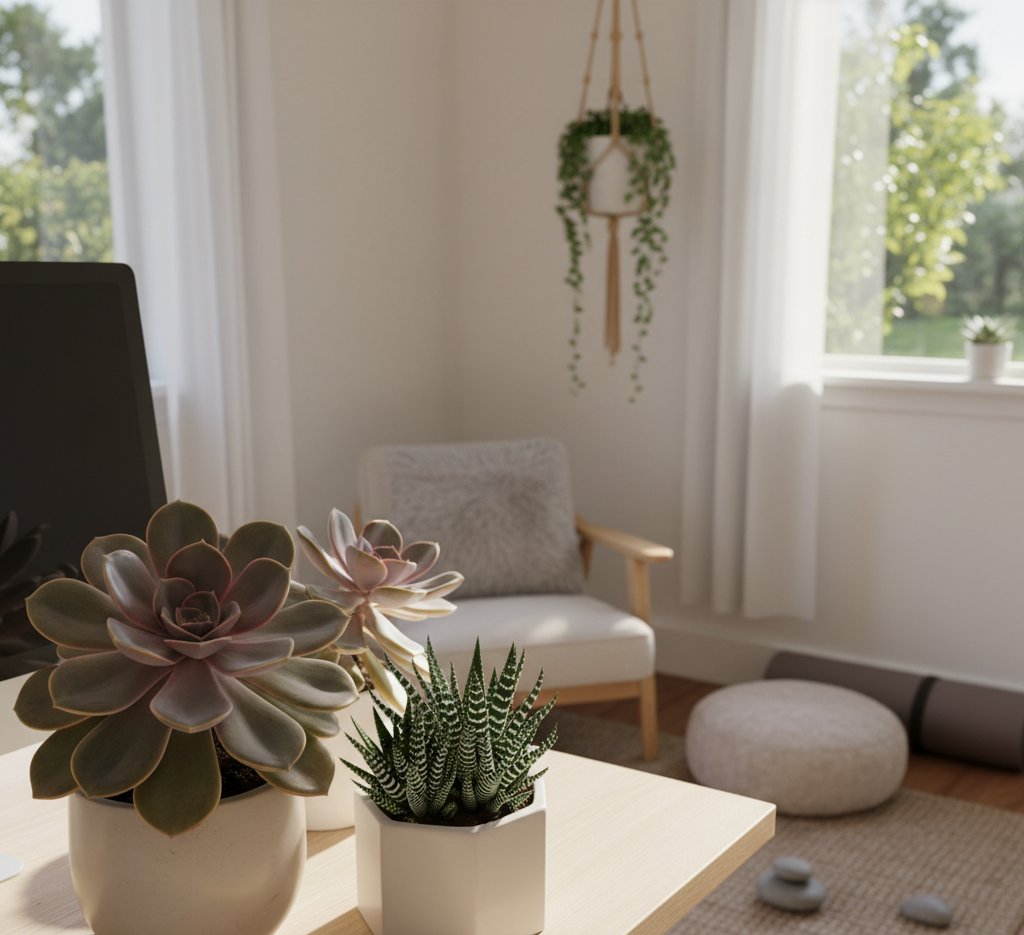
A wellness-focused succulent design can support both physical health and emotional balance. Plants help regulate indoor humidity, which may ease dry skin and breathing discomfort. Their presence can also reduce eye strain when placed near screens or work areas.
Succulents contribute to a clean, low-allergen environment since they release minimal pollen and require little soil disturbance. This makes them suitable for wellness spaces such as meditation corners, offices, or recovery areas.
You may notice improved focus and calmness when surrounded by green, structured plant forms. These subtle effects encourage daily rejuvenation and help maintain a steady sense of well-being without demanding constant attention or upkeep.
Integrating Succulents And Natural Elements
Blending succulents with natural materials like wood, stone, and light helps you build a calm and balanced space. These elements work together to support mental focus, physical comfort, and a stronger connection to your surroundings.
Incorporating Indoor Plants For Serenity
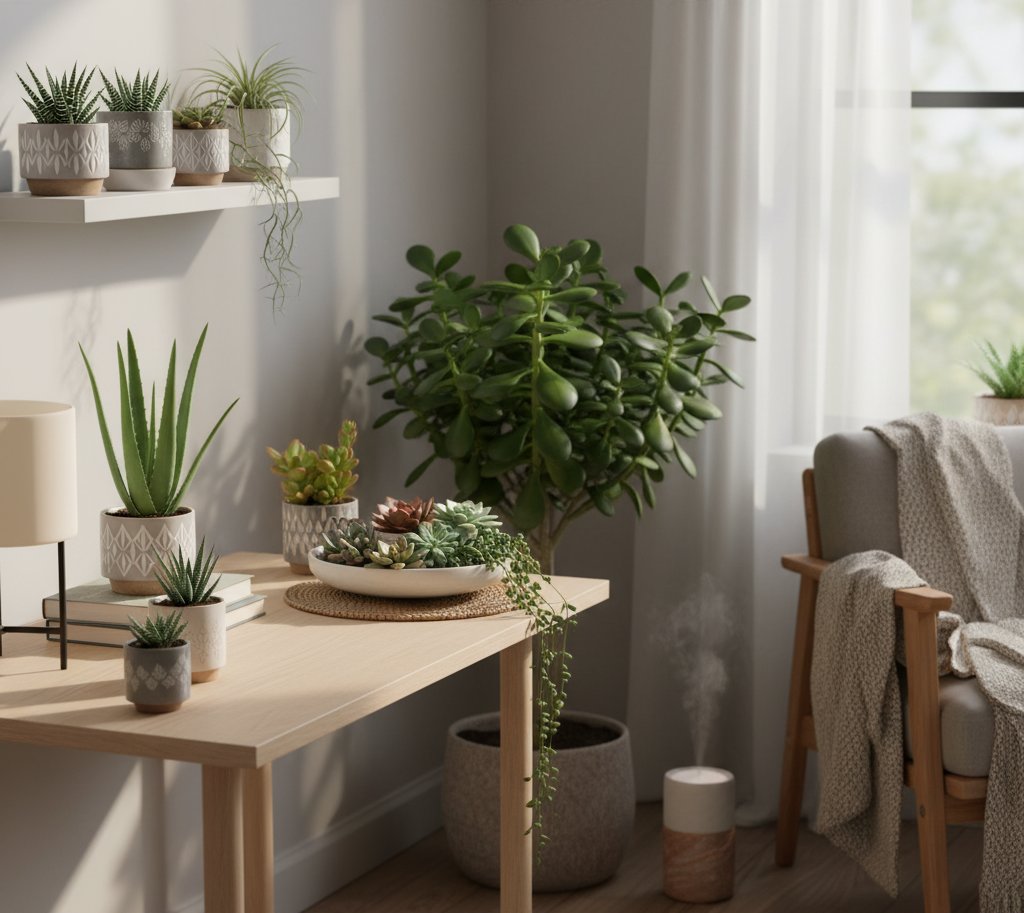
Adding indoor succulents can create a sense of serenity by softening the look of a room. Their compact size and sculptural shapes make them easy to place on desks, shelves, or windowsills. You can group several small plants together for visual interest or use one larger plant as a focal point.
Succulents help maintain a soothing environment because they require minimal care and thrive in dry indoor air. Their muted greens and subtle textures reduce visual clutter, which supports relaxation.
Examples of calming succulents:
| Plant | Feature | Ideal Placement |
|---|---|---|
| Aloe vera | Smooth, upright leaves | Desk or bedside |
| Haworthia | Compact rosette form | Small shelf |
| Jade plant | Rounded leaves | Entryway or window ledge |
Keeping plants in consistent, visible spots encourages mindfulness and a steady routine.
Maximizing Natural Light And Circadian Rhythms
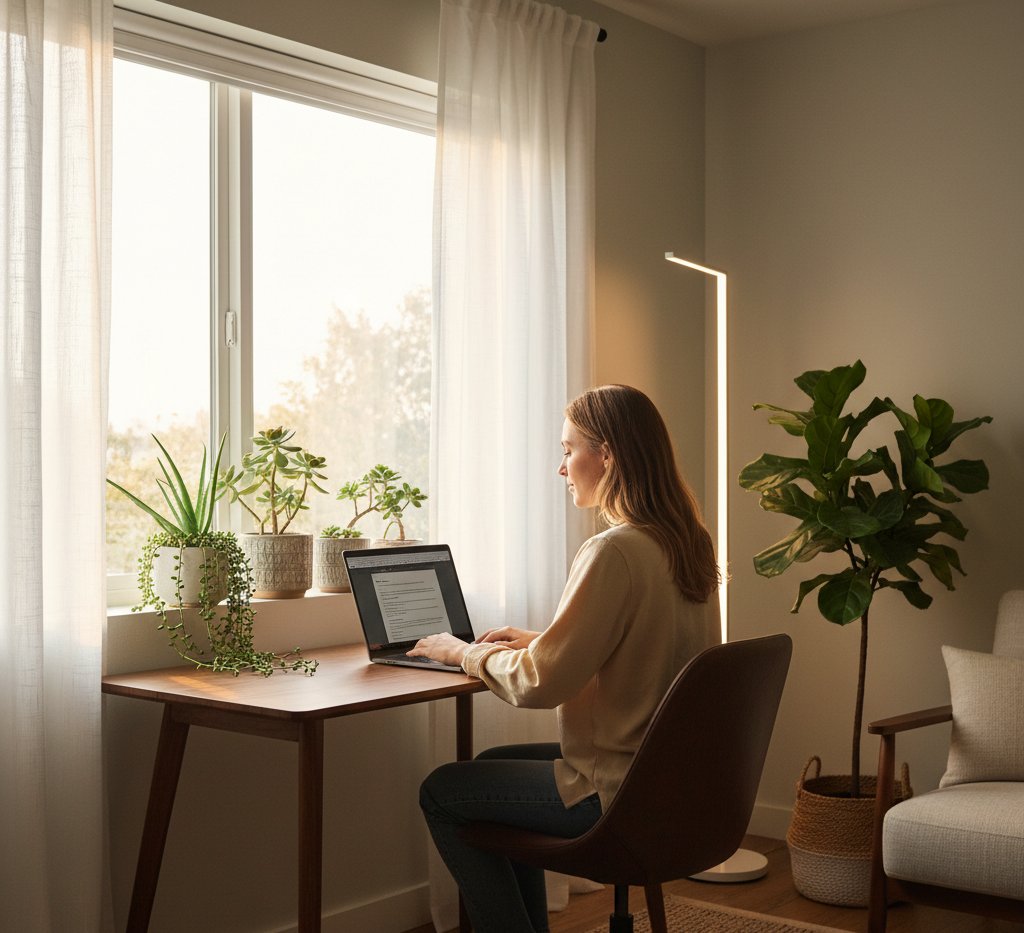
Most succulents depend on bright, indirect sunlight to stay healthy. Position them near windows that receive morning or late-afternoon light. This not only benefits the plants but also supports your circadian rhythm by exposing you to natural daylight during the day.
When you align your workspace or living area with daylight patterns, you help your body maintain a stable sleep-wake cycle. Natural light also reduces eye strain and boosts alertness.
If sunlight is limited, use full-spectrum LED lights that mimic daylight. Keep lighting consistent and avoid harsh glare. Adjusting blinds or using sheer curtains can balance brightness while keeping a soft, natural tone in the room.
Utilizing Texture For Comfort
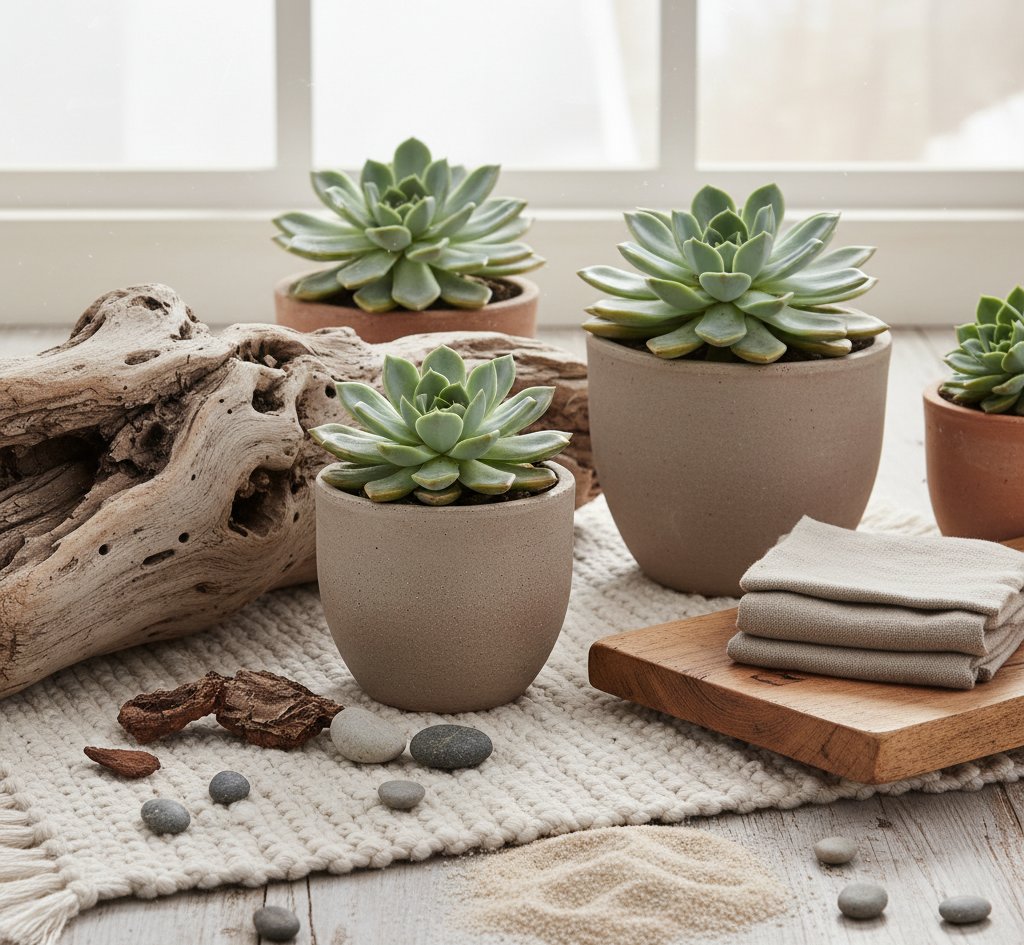
Texture adds depth and comfort to spaces that include succulents. The smooth leaves of echeveria or the rough surface of driftwood create visual variety without overwhelming the senses. Combining these textures with natural materials like linen, clay, or stone enhances the tactile quality of your environment.
You can use a mix of materials to create a balanced look:
- Soft: woven fabrics, cotton rugs
- Hard: ceramic pots, pebbles
- Organic: bark, sand, or wood trays
This mix encourages sensory comfort and makes the area feel grounded. By keeping textures natural and cohesive, you maintain a clean, restful atmosphere that supports well-being.

